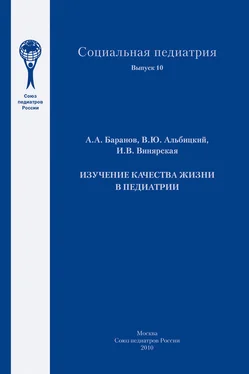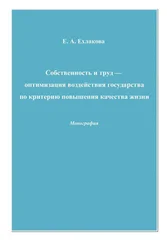128. Cox C. L., Lensing S., Rai S.N. et al. Proxy assessment of quality of life in pediatric clinical trials: application of the Health Utilities Index 3 // Qual. Life Res. – 2005. – V. 14, № 4. – P. 1045–1056.
129. Cremeens J., Eiser C., Blades M. Lactors influencing agreement between child self-report and parent proxy-reports on the Pediatric Quality of Life Inventory 4.0 (PedsQL) generic core scales // Health Qual. Life Outcomes. – 2006. – V. 30, № 4. – P. 58.
130. Cronbach L.J. Coefficient alpha and the internal structure of tests // Psychometrica. – 1951. – V. 16, № 3. – P. 297–334.
131. Daley A. J., Copeland R. J., Wright N. R et al. Protocol for: Sheffield Obesity Trial (SHOT): a randomised controlled trial of exercise therapy and mental health outcomes in obese adolescents // BMC Public Health. – 2005. – V. 31, № 5. – P.113.
132. Da Mota Falcao D., Ciconelli R. M., Ferraz M. B. Translation and cultural adaptation of quality of life questionnaires: an evaluation of methodology //J. Rheum. – 2003. – V. 30, № 2. – P. 379–385.
133. Davis E., Waters E., Mackinnon A. et al. Paediatric quality of life instruments: a review of the impact of the conceptual framework on outcomes // Dev. Med. Child Neurol. – 2006. – V. 48, № 4. – P. 311–318.
134. De Civita M., Regier D., Alamgir A. H. et al. Evaluating health-related quality-of-life studies in paediatric populations: some conceptual, methodological and developmental considerations and recent applications // Pharmacoeconomics. – 2005. – V. 23, № 7. – P. 659–685.
135. Degliute R., Pranckevicius S. Pediatric disability of the upper extremity and quality of life questionnaire: reliability, validity, and sensitivity to change // Medicina (Kaunas). – 2006. -V. 42, № 8. – P. 635–642.
136. Dubo R. Mirage of Health. – N. Y., Harper and Row, 1959.
137. Eiser C., Morse R. Can parents rate their child’s health-related quality of life? Results of a systematic review // Qual. Life Res. – 2001. – V. 70, № 4. – P. 347–357.
138. Eiser C., Morse R. The measurement of quality of life in children: past and future perspectives //J. Dev. Behav. Periatr. – 2001. – V. 22, № 4. – P. 248–256.
139. Eiser C., Vance Y. H., Horne B. et al. The value of the PedsQL™ in assessing quality of life in survivors of childhood cancer // Child: Care, Health and Development. – 2003. – V. 29. – P. 95–102.
140. Eland J. M., Anderson J. A. The experience of pain in children Pain: a sourcebook for nurses and other health professionals. – Boston: Little, Brown, 1997. – P. 453–473.
141. Engel G. E. The clinical application of the biopsychosocial model // Am.J. Psychiatry. – 1980. – V. 137. – P. 535–543.
142. Escobar R., Soutullo C. A., Hervas A. et al. Worse quality of life for children with newly diagnosed attention-deficit/hyperactivity disorder, compared with asthmatic and healthy children // Pediatrics. – 2005. – V. 116, № 3. – P. 364–369.
143. Fadrowski J., Cole S. R., Hwang W. et al. Changes in physical and psychosocial functioning among adolescents with chronic kidney disease // Pediatr. Nephrol. – 2006. – V. 21, № 3. – P. 394–399.
144. Fairclough D. Method of analysis for longitudinal studies of health-related quality of life // Quality of Life Assessment in Clinical Trials. – Oxford University Press: Oxford, NewYork, Tokyo, 1998. – P. 227–247.
145. Feeny D. Evaluation of HRQOL in special population: children // Qual. Life Res. – 2000. – V. 9, № 3. – P. 246.
146. Fekkes M., Theunissen N., Brugman E. et al. Development and psychometric evaluation of the TAPQOL: a health-related quality of life instrument for 1-5-year-old children //Qual. Life Res. – 2000. – V. 9, № 8. – P. 961–972.
147. Felder-Puig R., Frey E., Sonnleither G. et al. German cross-cultural adaptation of the Health Utilities Index and its application to a sample of childhood cancer survivors // Europ.J. Pediat. – 2000. – V. 159, № 4. – P. 283–288.
148. Felder-Puig R., Frey E., Proksch K. et al. Validation of the German version of the Pediatric Quality of Life Inventory™ (PedsQL™) in childhood cancer patients off treatment and children with epilepsy // Qual. Life Res. – 2004. – V. 13. – P. 223–234.
149. Flapper В. C., Koopman H. M., Ten N. C. et al. Psychometric properties of the TACQOL-asthma, a disease-specific measure of health related quality-of-life for children with asthma and their parents // Chron. Respir. Dis. – 2006. – V. 3, № 2. – P. 65–72.
150. Flodmark С. E. The happy obese child // Int. J. Obes. (Lond). – 2005. – V. 29 (Suppl. 2).-P.31–33.
151. Forth Annual Conference of the International Society for QOL Research: Abstracts // Qual. Life Res. – 1997. – V. 7. – P. 613–747.
152. French D., Christie M., West A. Quality of life in childhood asthma: development of the Childhood Asthma Questionnaires Assessment of Quality of Life in Childhood Asthma. – Switzerland, 1994. – P. 157–180.
153. Hasselgren M., Gustafsson D., Stallberg B. et al. Management, asthma control and quality of life in Swedish adolescents with asthma // Acta Paediatr. – 2005. – V. 94, № 6. – P. 682–688.
154. Holm E. A., Esmann S., Jemec G. B. Parent gender and assessment of infant life quality //J. Eur. Acad. Dermatol. Venereol. – 2006. – V. 20, № 3. – P. 274–276.
155. Holme S.A., Man I., Sharpe J.L. et al. The Children’s Dermatology Life Quality Index: validation of the cartoon version // Brit.J. Derm. – 2003. – V. 148. – P. 285–290.
156. Homan M., Baldassano R. N., Mamula P. et al. Managing complicated Crohn’s disease in children and adolescents // Nat. Clin. Pract. Gastroenterol. Hepatol. – 2005. – V. 2, № 12. – P. 572–579.
157. Indredavik M. S., Vik T., Heyerdahl S. et al. Low-birthweight adolescents: quality of life and parent-child relations // Acta Paediatr. – 2005. – V. 94, № 9. – P. 1295–1302.
158. Jacqz-Aigrain E., Zarrabian S., Pandolfini C. et al. A complete clinical trial register is already a reality in the paediatric field // Therapie. – 2006. – V. 61,№ 2.-P. 121–124.
159. Juniper E. E, Guyatt G., Feeny D. Measuring quality of life in children with asthma // Qual. Life Res. – 1996. – V. 5, № 1. – P. 35–46.
160. Kanter L. J., Siegel C. J., Snyder C. F. et al. Impact of respiratory symptoms on health-related quality of life and medical resource utilization of patient treated be allergy specialists and primary care providers // Ann. Allergy Asthma Immunol. – 2002. – V. 89, № 2. – P. 139–147.
161. Katz S. The science of quality of life // J. chron. Dis. – 1987. – V. 40, № 6. – P. 459–463.
162. Kind P, French D., Christie M. et al. Measuring quality of life in children. Assessment of Quality of Life in Childhood Asthma. – Switzerland, 1994.-P. 107–117.
163. King G., Tucker M., Baldwin P. et al. A life needs model of pediatric service delivery: services to support community participation and quality of life for children and youth with disabilities // Physiol. Occup. Ther. Pediat. – 2002. – V. 22, № 2. – P. 53–77.
164. Kvrgic S., Niciforovic-Surcovic O. Quality of life and its measurement in children // Med. Pregl. – 2002. – V. 55, № 1–2. – P. 57–59.
165. Kwok M. Y., Walsh-Kelly С. M., Gorelick M. H. et al. National Asthma Education and Prevention Program severity classification as a measure of disease burden in children with acute asthma // Pediatrics. – 2006. – V. 117, Pt 2, № 4. – P. 271–277.
166. Laffel L. M., Connell A., Vangsness L. et al. General quality of life in youth with Type 1 diabetes: Relationship to patient management and diabetes-specific family conflict // Diabetes Care. – 2003. – V. 26. – P. 3067–3073.
Читать дальше












